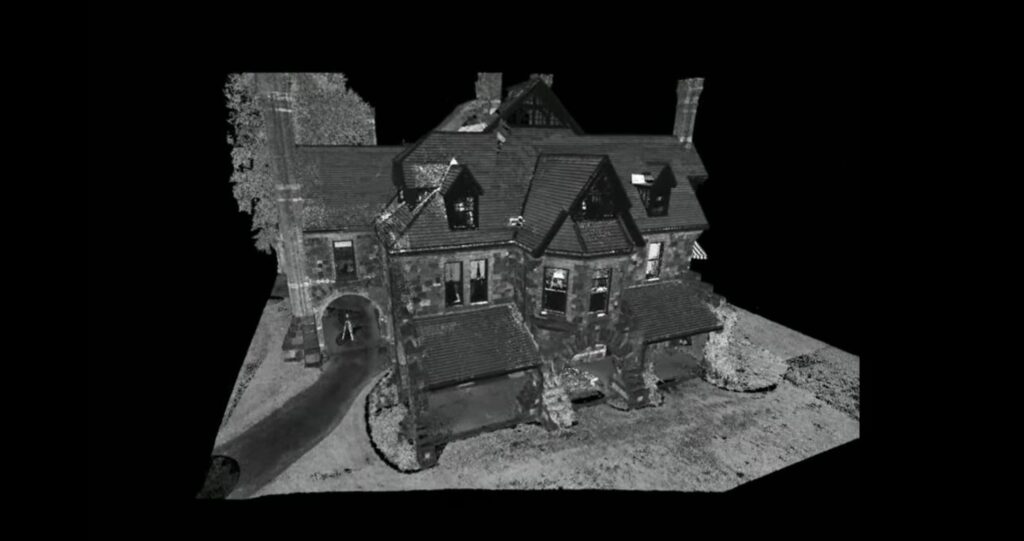 Eustis Estate
Eustis Estate
The Kitchen
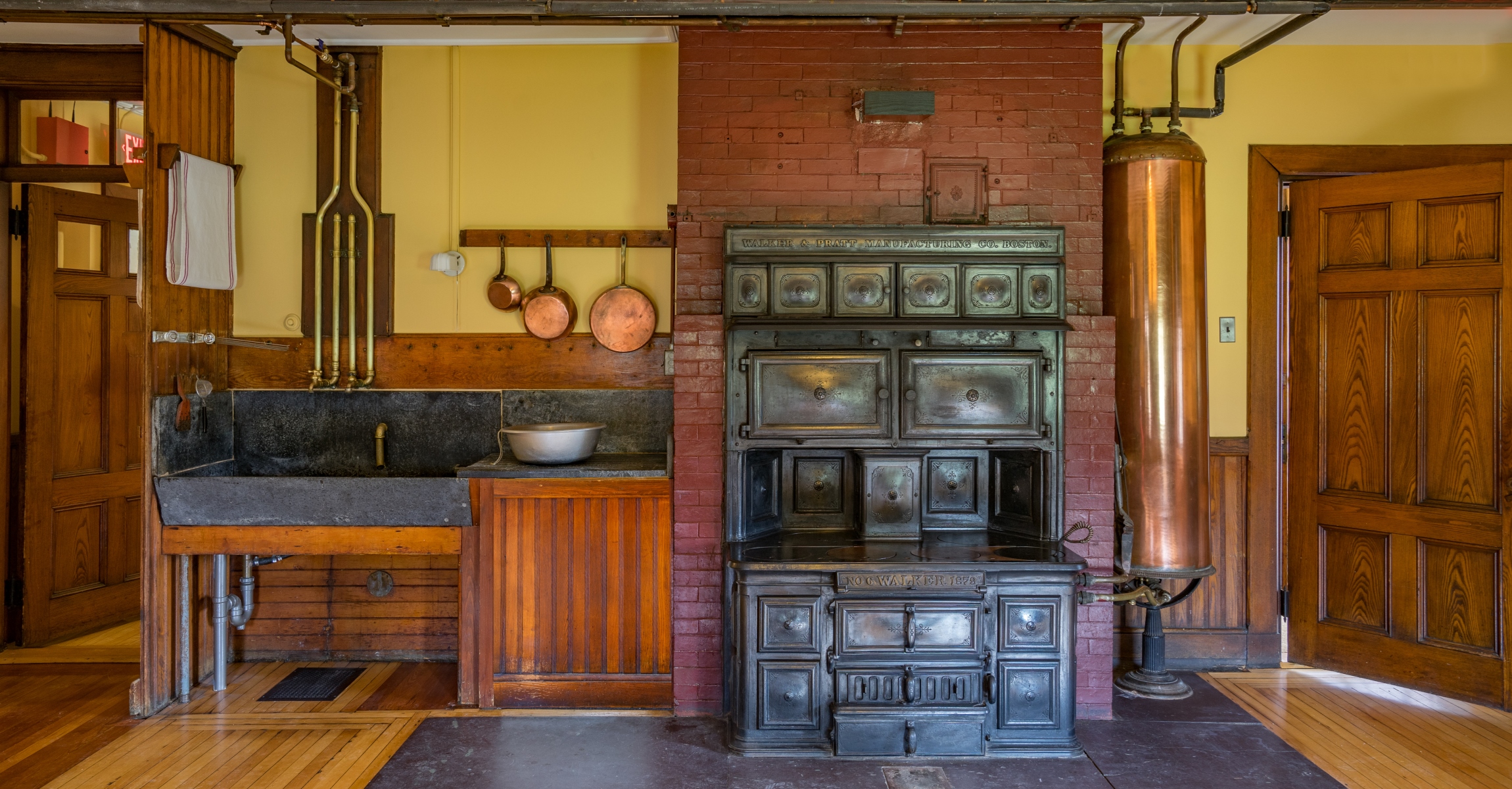
The service wing of the house was designed for practicality and to be carefully hidden from public view. Workflow was a priority in the service spaces, and the design reflects that. Many modern conveniences were installed that allowed the domestic staff to complete their daily tasks efficiently.
“The kitchen by first right is the cook’s domain. The butler’s pantry–so called–and the dining-room are the field of the waitress’s operations.”
From The Up-to-Date Waitress, 1908
Domestic Staff
During the early years of the Eustis Estate, the domestic staff was entirely made up of people from outside the United States. In 1880 a woman from England worked and lived in the house, likely as the nurse who looked after the young twin boys. A young woman of Irish descent and three people from Canada, including a mother and son, comprised the house staff that year. In subsequent years the census shows more Americans in these positions, as well as domestic staff from Ireland, Switzerland, Germany, and Sweden.
The census data only represents those living inside the mansion house. (See the next section for the layout of their living quarters.) The family employed a butler who is not listed on the census, so he likely lived in another building on the property. There were at least a dozen other staff members (and their families) living and working on the estate, housed in the nine houses on the property maintained for employees. All staff were supplied with dairy products and produce from the gardens and orchards.
1880 Domestic Servants
The 1880 national census listed the following people as domestic servants who also lived in the mansion house. As the eldest person on staff it is likely that Sarah Law was the cook or head housekeeper.
Hannah Keefe, 22, Servant
Eliza Walsh, 28, Servant
Annie Stayes, 28, Servant
Sarah Law, 38, Servant
Charles Law, 15, Servant
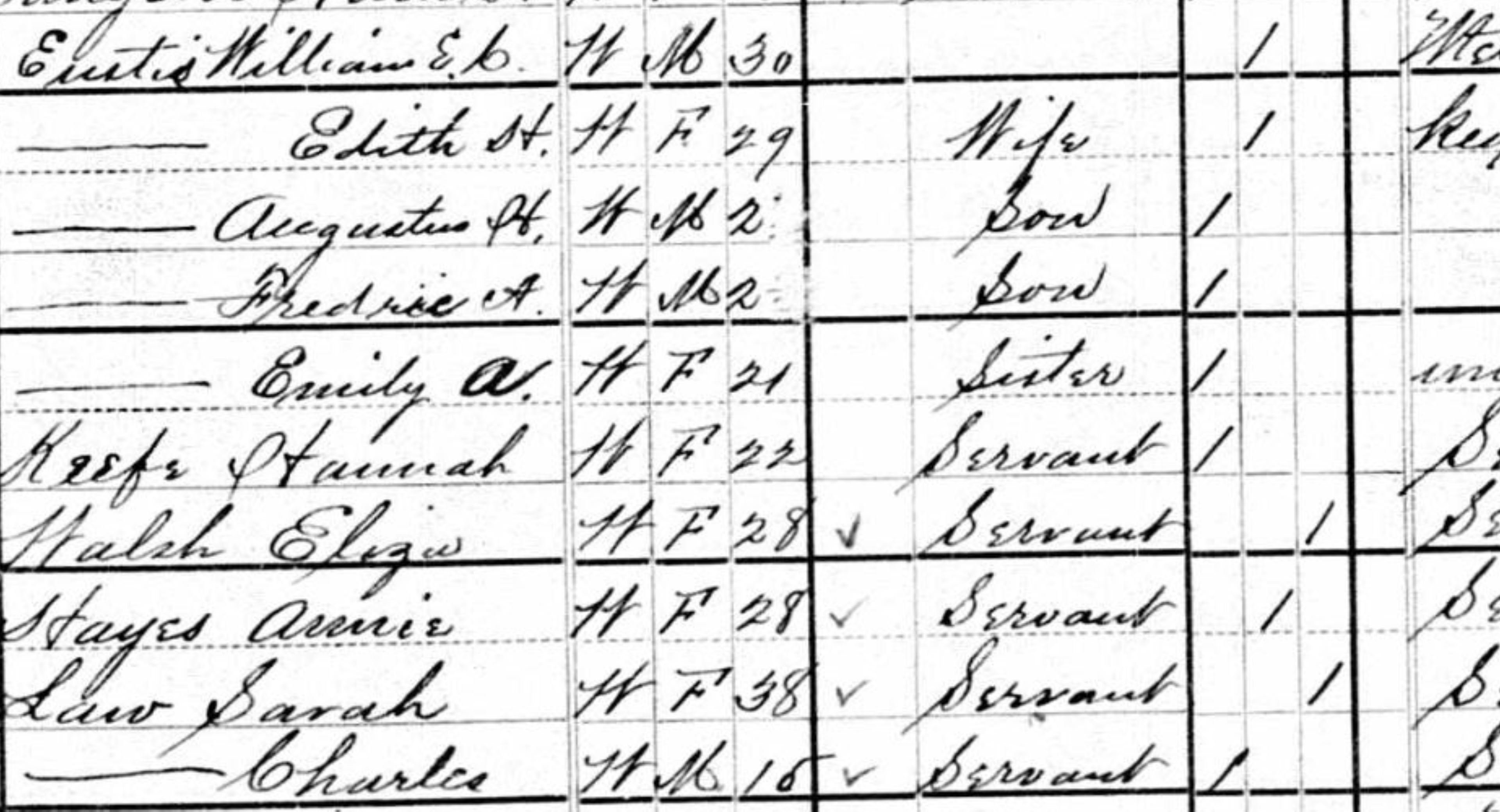
1900 Domestic Servants
The 1900 U.S. Census recorded more details about a person’s occupation. As a result, we know specifically that Emeline Hildebrand was the housekeeper and that Alice Spicer may have been Mary Eustis’s music teacher.
Emeline Hildebrand, 61, Housekeeper
Annie O’Connor, 37, Servant
Mary McGinness, 26, Servant
Alice Spicer, 43, Teacher Music

1910 Domestic Servants
By 1910 Emeline Hildebrand was still the head housekeeper and Hilda H. was the cook.
Pauline E. Bowie, 34, Seamstress
Charles H. Bowie, 42, Steward
Hilda Hedwig, 27, Cook
Mildred Krumin, 21, Laundress
Emeline A. Hildebrand, 77, Housekeeper
Oswald S. Perry, 38, Carpenter
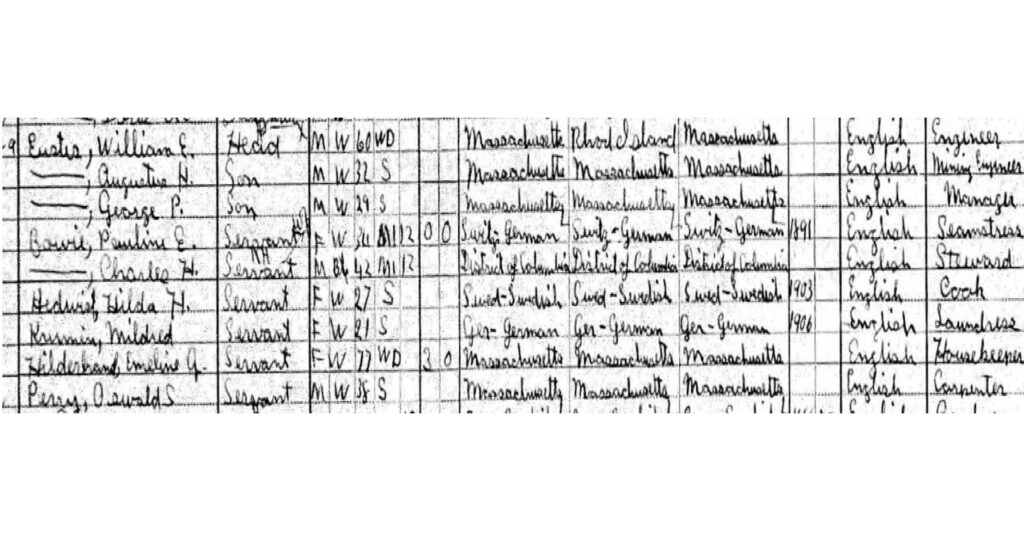
Walker and Pratt Stove
This stove is dated 1879, which means that it was a brand new, top of the line item when it was installed here the same year. A large black iron hood was installed over the coal stove, the outline of which can still be seen in the bricks. Prior to the 1970s when radiators were installed this coal stove was the only source of heat in the kitchen.
On Speaking Tubes
Because this wing was tucked away far from the public spaces or family bedrooms, it was important for the family to be able to communicate with the domestic staff who lived and worked here. To accommodate this, speaking tubes were built into the walls of the house during construction, running from strategically chosen rooms down to the kitchen. There are six different speaking tubes:
1. Night Nursery
2. Second Floor Hallway
3. Third Floor Hallway
4. China Closet
5. Bed Chamber Dressing Room
6. Lab
In the rooms above, the opening of the speaking tube is a flared cone of ceramic. The other end has a whistle valve, so that if a person blows into one of the tubes in the house a whistle, like that of a tea kettle, will sound in the kitchen. This alerts the person on the other end as to which tube is in use and they can then open the valve and have a conversation.
“The habit of calling from the top to the bottom of the house is sometimes permitted when only one servant is kept. It should never be allowed…Speaking-tubes are most desirable, but when they are out of the question a bell can almost always be arranged which will notify the family of the arrival of visitors, or will serve to call the maid, if her presence is desired above stairs. American voices have sufficient reputation for loudness and shrillness already, without increasing these unpleasant tendencies by screaming orders up or down a couple of flights of stairs.”
From Housekeeping Made Easy, 1888
A Modern Call System
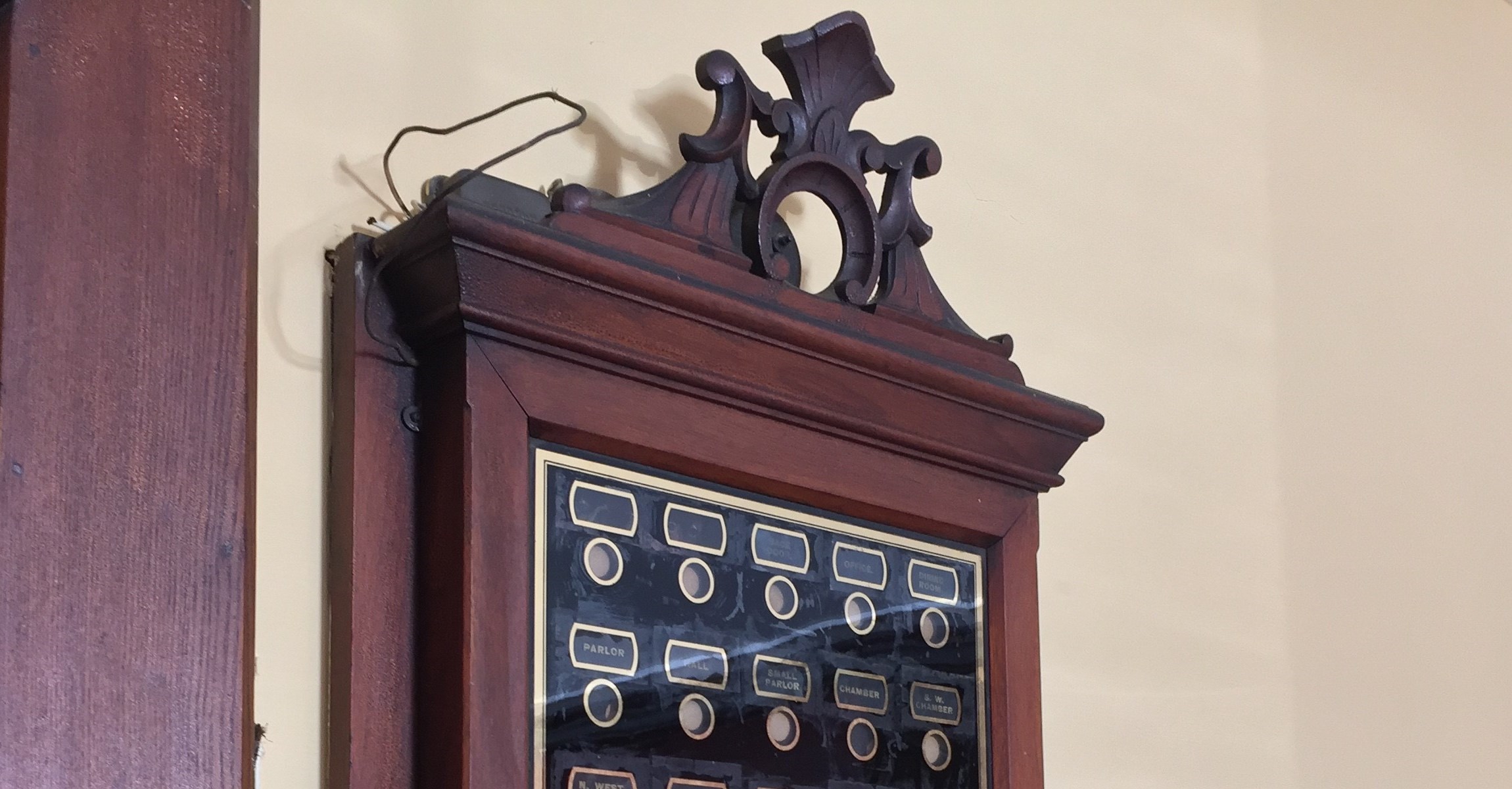
The Electric Annunciator
An electric call box system facilitated communication between the Eustises and their staff. A family member would push a wall-mounted button in one of twenty spaces throughout the house, causing the bell at the top of the call box to ring and the specific room that was calling to be indicated. Depending on the room, a parlor maid, chamber maid, waitress, or other staff member would attend to the family member calling.

